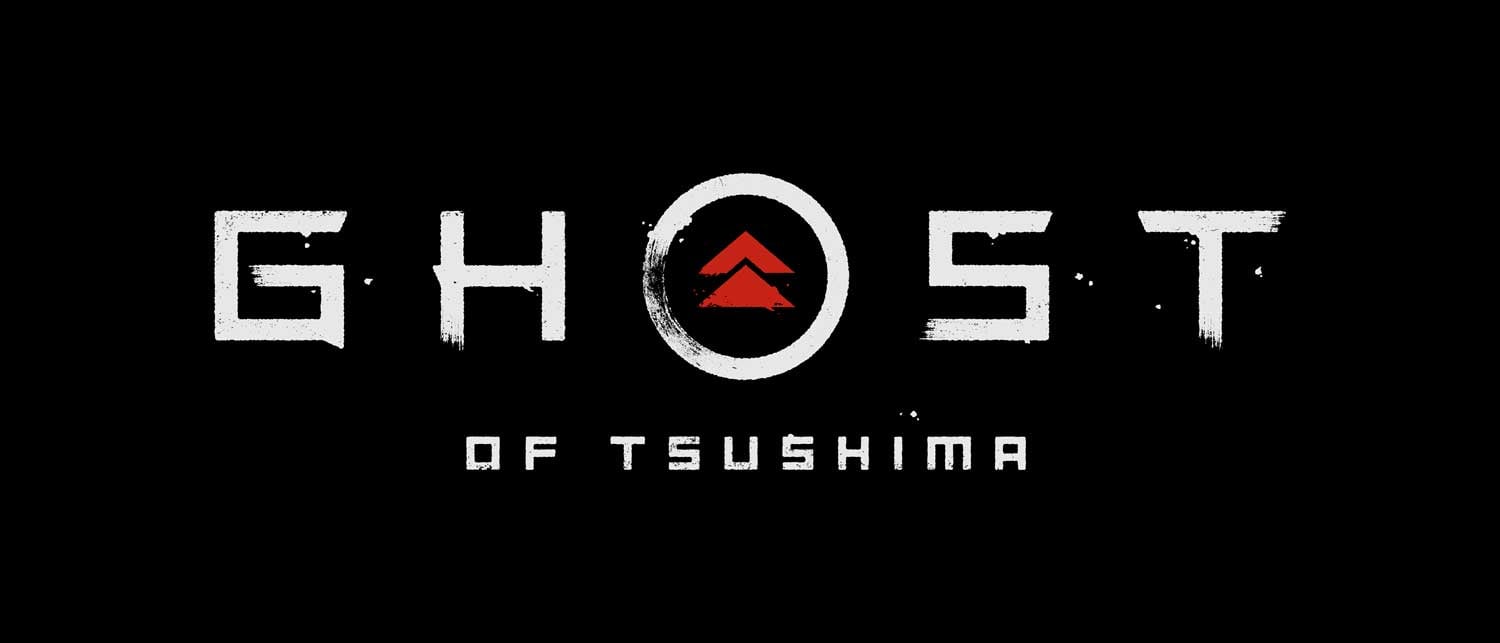
Following a Mongolian invasion, you find yourself as the last Samurai of your clan and must seek vengeance. Equipped with a katana and the skills of a highly-trained warrior, the journey ahead is going to be a bloody one.
Ghost of Tsushima makes a great first impression. The picturesque landscape is stunning. Lush fields of tall grass with flowers that sway as the wind flows around them. You will often stop to watch the leaves shed from trees like falling snow.
Wind plays a big part in this game and is the most unique and impressive feature. It is very clear that this game wants to have a minimalistic UI. There is no mini-map, no status bars, compass or anything we often get in open-world games. Instead, you have a small health bar and you must use the wind to navigate.

Swiping up on the touchpad will trigger the wind to blow heavily. Swirls of air can be seen on the screen and all of the plants and grass will bend as the wind blows them down. You can pause the game and view the world map if you need to of course. The wind serves as a very artistic way of guiding you to your destination without cluttering the screen and it is very effective.
Galloping around the beautiful landscape on your horse will only last you so long before you need to get stuck into the meat of the game. This is where the disappointments start.
As the son of the most powerful man on the island, you are a skilled Samurai. You would assume that the combat would be incredibly high paced and violent but it is the complete opposite. You have access to a very limited set of attacks at the start of the game. Basic attacks that any skilled warrior should possess, but you do not.
Even when you get toward the end of the game, the combat is still sluggish and dull. You have a light attack and a heavy attack. You will end up button mashing these attacks until all of the enemies are dead.

As you complete more tales and events, your reputation will increase, unlocking skill points which you can use to purchase new abilities. The talent tree to unlock new sword abilities is rather small for a game focused on a Samurai. Nothing stands out as a “must-have” skill for you to work toward. Even with everything unlocked, you still feel like a dull hammer, smashing away enemies rather than a laser-precise killing machine.
There are four different attack stances you can use. Depending on the stance, you will attack differently. There is a stance that works better for shield enemies, sword enemies etc. You must hold down R2 and pick your stance to change mid-combat. The combat doesn’t slow down when you open the menu to change, leaving you open to attack while you change. Even with a new stance, you still have to mash the same buttons, it doesn’t enhance the motion of the combat, just allows you to do more damage to particular enemy types.
Stances are important as if you try to attack a shield enemy with the wrong stance, you will need to mash buttons for longer than normal before you break their defence down enough to actually damage them.

You can parry enemy attacks but the majority of enemies will attack with a “red” attack which signals you can’t parry. You will need to dodge instead, why both were not mapped to the same button is a mystery. The roll you perform when you dodge is so extreme that you end up needing to run back to the enemy to continue attacking. This gives them time to rebuild their composure and you must break their defences yet again.
You are also unable to use the roll to get behind enemies because you can’t lock onto them. You point the thumbstick in the direction of the enemy, but it doesn’t always target the enemy you want. Since you need to use the same thumbstick to roll away, you end up locking onto a different enemy automatically. This is another issue that lets enemies regain their composure while you are attacking the wrong enemy and can’t target the enemy you want.
Games in the Batman Arkham series and the latest Spiderman game have shown us how stringing combos together can be fluid and clean. A highly skilled Samurai should be able to dip and dodge between enemies, slaying them while you remain untouched. This simply isn’t possible in Ghost of Tsushima. When you are faced with a crowd of enemies, you must hack through them one at a time without any grace or display of agility.
You have several tools and abilities at your disposal. A smoke bomb, sticky bomb, bow and Kunai knives. Using these does enhance combat to a degree, but even when you stun enemies with a smoke bomb, you have to hack up each of these enemies with the same button-mashing you have to do without it, it is just easier.
The biggest problem with the other weapons you have is that the game does not slow down when you switch. If you want to change from your bow to a different weapon, you must hold down R2 or R1 and select a weapon and ammo but the game doesn’t slow down. You are likely to take damage when you enter this menu. You need to run away to equip a new ability, which pulls you further away from a graceful kill combo.

You often need to rush when changing weapons to avoid enemies catching you, you will find you make mistakes, selecting something you didn’t intend, completely ruining the encounter. The menu to change gear while in combat requires too many button presses. It makes the menu feel clunky and does not work well when you are under pressure.
When you are not on a quest, you can freely explore the island and do whatever you want. The map is populated with lots of random events and points of interest to visit, much like we have seen in the Farcry games.

Some of these might be hot springs, prayer shrines or fox dens that will increase your health and other attributes. Other types of events involve combat, things like liberating camps that the Mongols have taken over. Clearing away the Mongol invasion will often give you resource items that you can use to upgrade weapons and armour.
There are also a large number of side quests known as tales. A lot of these are quite enjoyable when you must uncover the mystery behind some long-forgotten armour or weapon. Between the side quests and the main story, you will have a huge amount of content to keep you busy. Some of the mystery feels very shallow. One quest, in particular, has you travelling across the map for items to unlock a door. A door which you could easily climb, even without a ladder.
The ancient and long-forgotten areas often feel too hard to believe. Anyone with a ladder could get inside these places. Figuring out the mystery and getting inside never feels satisfying. You find yourself wondering how nobody stumbled across this place that is not very well hidden at all.

All of the events on the map are enjoyable enough for you to want to seek them out, but you quickly run out of enthusiasm due to the repetitiveness and lack of meaningful character progression. Why bother trying to increase your reputation when the skill points don’t really buy you anything worthwhile.
Another problem with the tales and events is there are no puzzles to solve. There are some platforming elements, but they are as basic as you can possibly get. The main focus of the game is the combat and it just isn’t good enough. You never need to think creatively, you just have to mash square and triangle over and over again.
For those who do not want to follow the way of the Samurai, you can opt for a more stealthy approach and silently take down enemies. It was disappointing that this wasn’t a good/evil style measurement that we saw in the InFamous games. It would have been cool to see things change as you become less of a Samurai and more of a Ninja.
Even if the game did track your tendencies to be a good or bad Samurai, the stealth mechanics offer very little enjoyment. The mechanics are even worse than the primary combat because they have a tendency to just not work.

When you are hidden you can press square to perform a stealth kill. You can only do this when prompted however and for some reason, this prompt doesn’t always appear. Sometimes, it doesn’t show up until you break cover, making it pointless. If you press square before the stealth kill prompt appears, you perform a regular attack, alerting everyone nearby. You can be standing right behind an unaware enemy and the prompt to kill them won’t appear until you shimmy around the place, risking detection.
It is possible to perform a chain stealth assassination. This for some weird reason, a chain assassination is mapped to a different button. Square to assassinate but if you plan on killing more than one enemy using stealth, you need to press triangle. The same problem appears here with the basic assassination. Sometimes the only prompt you see is to press square. You press it and then you see triangle pop up as an option after it is too late. Why are these different buttons at all? If you want to chain the assassinations, press square again after the first kill. Having two buttons, both of which don’t work sometimes, make stealth kills a major pain in the ass.
Arrows are a great way to maintain stealth and they work well when they hit. Arrows often fly through an enemy without damaging them. For the most part, it does make life easy. Seeing how other enemies react to one of their friends suddenly dropping dead makes them feel like robots though. They make a minimal effort to find you before returning back to normal. Sometimes they will just look at the body and then go back to their normal patrol. The flaky assassination controls make it difficult to pick off more enemies while they search for you.
The primary story for the game is quite good and at the start of the story, you feel like you have a massively exciting journey ahead. The story delivers some twists and turns that are fun, but it all feels too underwhelming. The big battles all feel too small. The story paints you as this fearsome warrior but the gameplay makes you feel like a blunt tool. For all of the game’s strengths, it falls short in the most critical areas.
























